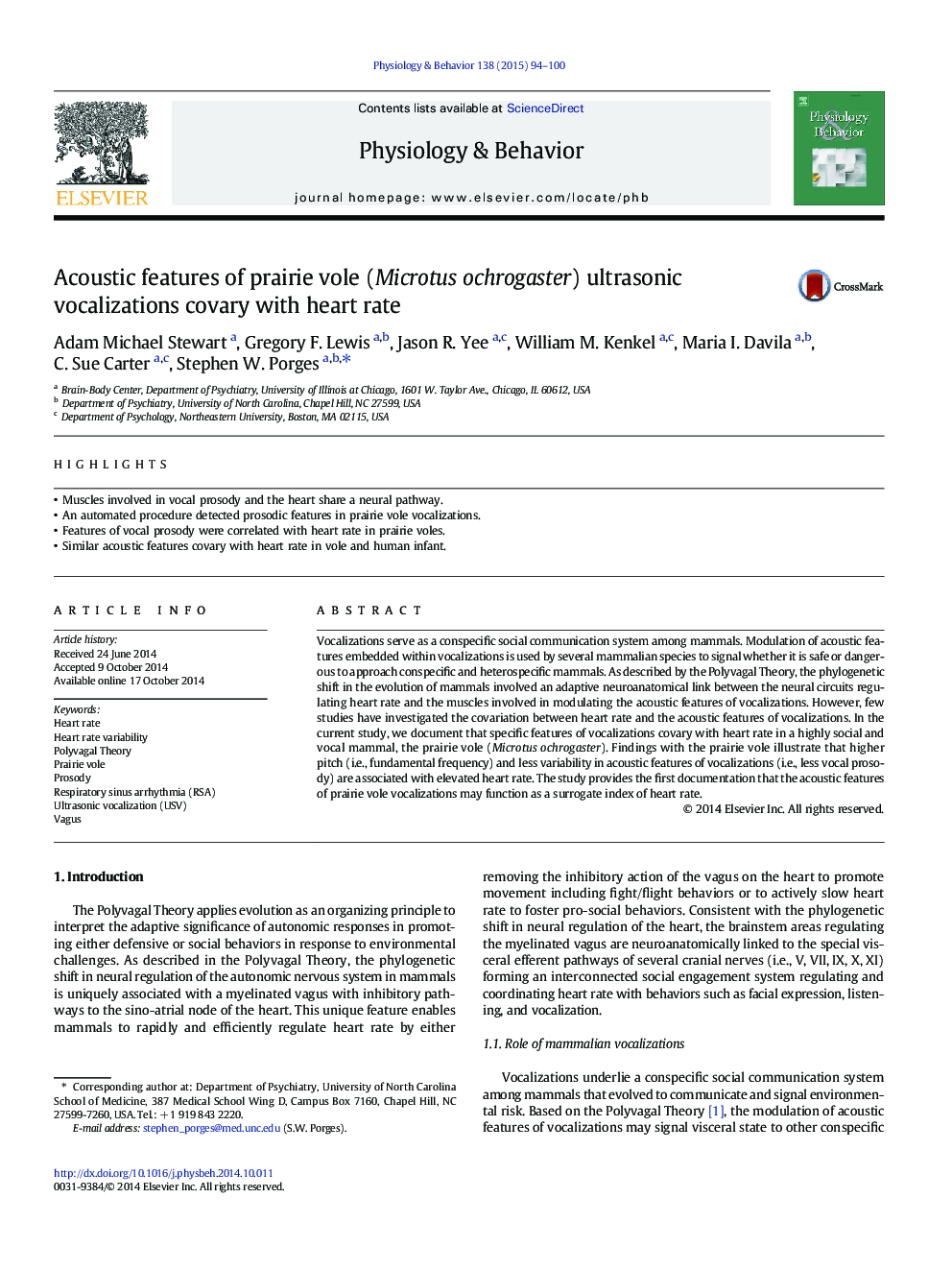| Article ID | Journal | Published Year | Pages | File Type |
|---|---|---|---|---|
| 2844197 | Physiology & Behavior | 2015 | 7 Pages |
•Muscles involved in vocal prosody and the heart share a neural pathway.•An automated procedure detected prosodic features in prairie vole vocalizations.•Features of vocal prosody were correlated with heart rate in prairie voles.•Similar acoustic features covary with heart rate in vole and human infant.
Vocalizations serve as a conspecific social communication system among mammals. Modulation of acoustic features embedded within vocalizations is used by several mammalian species to signal whether it is safe or dangerous to approach conspecific and heterospecific mammals. As described by the Polyvagal Theory, the phylogenetic shift in the evolution of mammals involved an adaptive neuroanatomical link between the neural circuits regulating heart rate and the muscles involved in modulating the acoustic features of vocalizations. However, few studies have investigated the covariation between heart rate and the acoustic features of vocalizations. In the current study, we document that specific features of vocalizations covary with heart rate in a highly social and vocal mammal, the prairie vole (Microtus ochrogaster). Findings with the prairie vole illustrate that higher pitch (i.e., fundamental frequency) and less variability in acoustic features of vocalizations (i.e., less vocal prosody) are associated with elevated heart rate. The study provides the first documentation that the acoustic features of prairie vole vocalizations may function as a surrogate index of heart rate.
